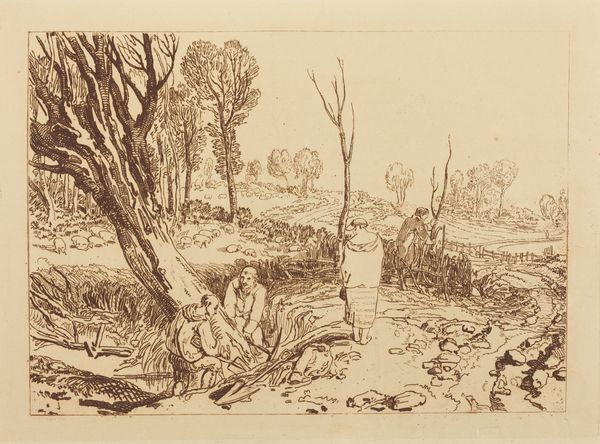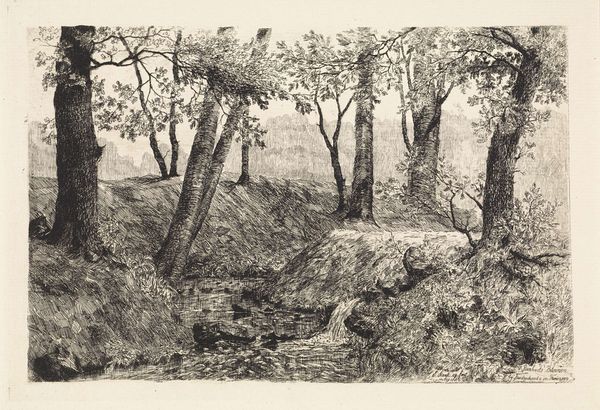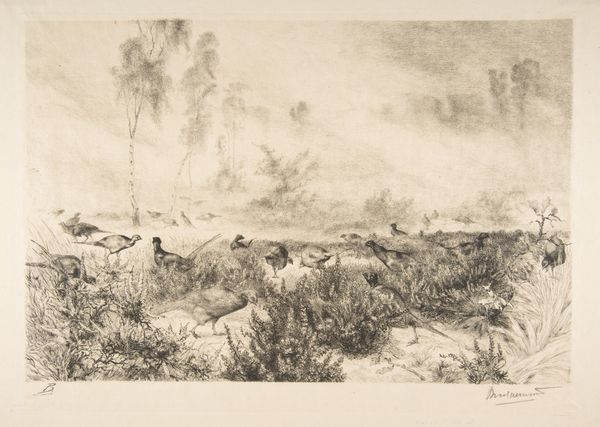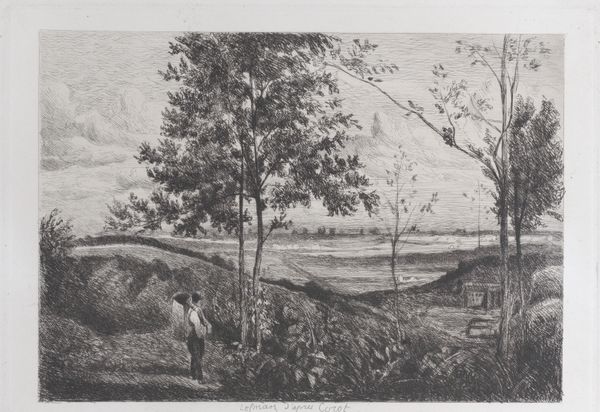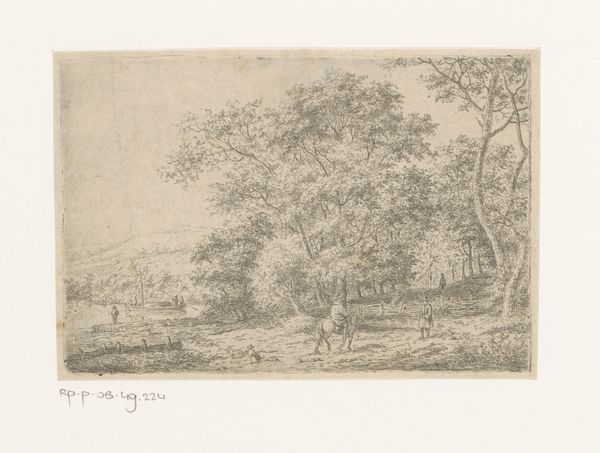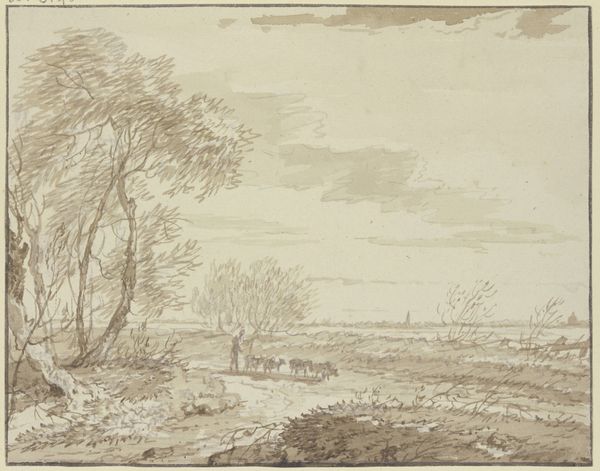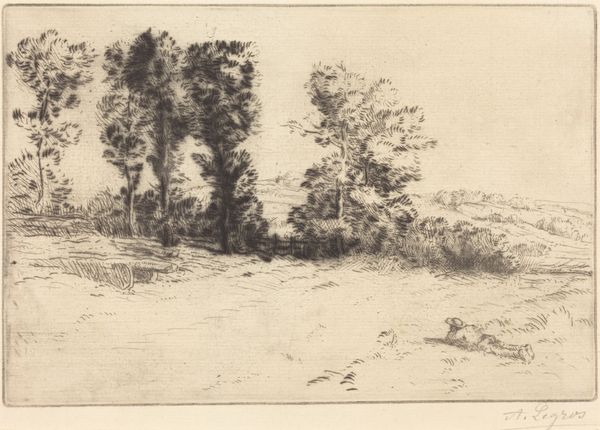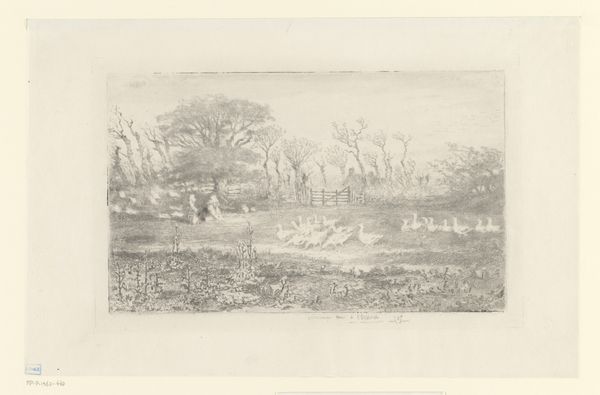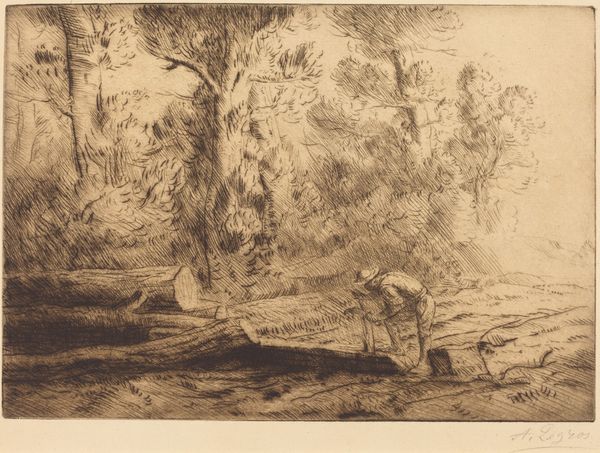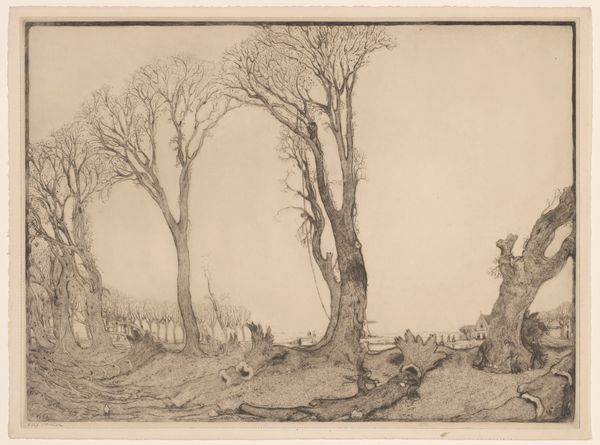
etching
#
etching
#
landscape
#
etching
#
realism
Dimensions: height 194 mm, width 268 mm
Copyright: Rijks Museum: Open Domain
Curator: Welcome. We’re looking at Theodoor Verstraete's etching, “Landschap met boerderijen,” dating roughly from 1860 to 1907. Editor: It feels incredibly still, doesn’t it? The monochrome and fine lines create this very hushed, almost melancholy atmosphere. There is such bleakness there. Curator: Yes, the lack of vibrant colors and the etching technique lend to this subdued, contemplative mood, effectively conveying the essence of a humble farm in a somber light. Consider the cultural and industrial shifts happening during this era, marking shifts away from agrarian lifestyles and its representation. Editor: Exactly. We are seeing, and in a way, mourning this traditional landscape. The barren-looking field, the sturdy trees and solid structures--they feel rooted to history. How can this art address today’s conversations surrounding displacement and the environment? Curator: By urging us to investigate these critical junctures in environmental consciousness and agricultural reform. It invites us to confront the enduring relevance of the politics of representation in landscape. The artwork, thus, goes beyond the purely visual to become an agent of social consciousness and dialogue. Editor: Absolutely. It’s about asking: who owned the land, who worked it, and what’s been lost and gained in this transition to industrialized societies. The choice to portray the mundane life serves the deeper purpose of preserving culture and history from disappearing entirely. Curator: Verstraete’s conscious use of a Realist approach reflects those social and political themes prevalent in the period, documenting this area while hinting to the economic and institutional concerns shaping agricultural lands. Editor: This art urges us to ask questions about ownership and land ethics in a more informed way. Curator: So when you walk away, let us hope that you think of art's function within social consciousness. Editor: It's more than a picture; it's a statement for social justice and memory.
Comments
No comments
Be the first to comment and join the conversation on the ultimate creative platform.
